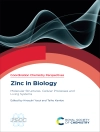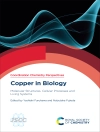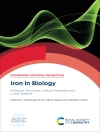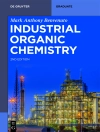Organometallic chemistry is an interdisciplinary science which continues to grow at a rapid pace. Although there is continued interest in synthetic and structural studies the last decade has seen a growing interest in the potential of organometallic chemistry to provide answers to problems in catalysis, synthetic organic chemistry and also in the development of new materials. This Specialist Periodical Report aims to reflect these current interests, reviewing progress in theoretical organometallic chemistry, main group chemistry, the lanthanides and all aspects of transition metal chemistry. Volume 31 covers literature published during 2001. Specialist Periodical Reports provide systematic and detailed review coverage in major areas of chemical research. Compiled by teams of leading authorities in the relevant subject areas, the series creates a unique service for the active research chemist, with regular, in-depth accounts of progress in particular fields of chemistry. Subject coverage within different volumes of a given title is similar and publication is on an annual or biennial basis.
Cuprins
Theoretical Organometallic Chemistry; Groups 1 and 11: The Alkali and Coinage Metals; Group 2 (Be-Ba) and Group 12 (Zn-Hg); Scandium, Yttrium and the Lanthanides; Carboranes, Including Their Metal Complexes; Group III – B, Al, Ga, In and Tl; Group 14: Silican, Germanium, Tin and Lead; Group 15: Phosphorus, Arsenic, Antimony and Bismuth; Organic Aspects of Organometallic Chemistry; Complexes Containing Metal-Carbon σ-Bonds of Groups 4 and 5 (Including Multiple Bonded Species); Complexes Containing Metal-Carbon σ-Bonds of Group 7 (Including Multiple Bonded Species); Organo-Transition Metal Cluster Complexes; Complexes Containing Metal-Carbon σ-Bonds of the Groups Iron, Cobalt and Nickel, Including Carbenes and Carbynes; Transition Metal Complexes of Cyclopentadienyl Ligands; Author Index












